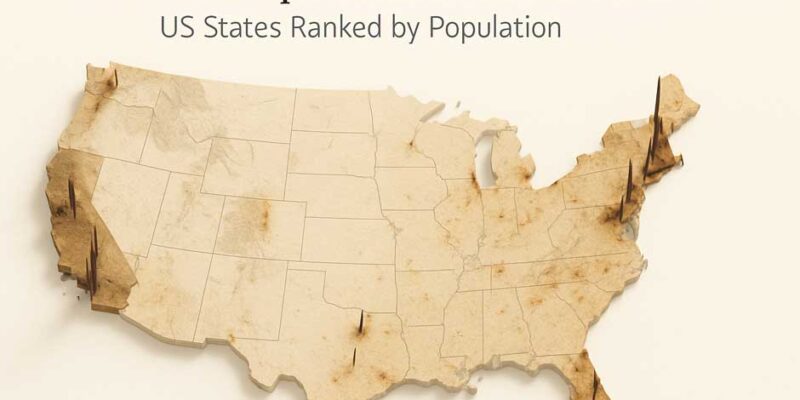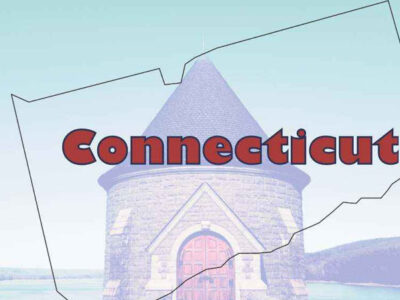Introduction: The Population Landscape of America
The United States stands as the world’s third most populous country, with approximately 347 million residents calling it home as of 2025. This massive population isn’t evenly spread across the nation’s 50 states, creating a fascinating patchwork of densely populated urban centers and sprawling rural landscapes. From bustling coastal cities to quiet mountain towns, America’s demographic tapestry tells a compelling story of where Americans choose to build their lives.
Understanding state population rankings isn’t just about numbers—these figures directly impact congressional representation, federal funding allocation, and economic development priorities. They also reveal which regions are thriving and which face demographic challenges in today’s rapidly changing world.
The Top 5 Most Populous States
California remains America’s undisputed population champion, home to nearly 40 million people—roughly 12% of all Americans. To put this in perspective, if California were its own country, it would boast the world’s fourth or fifth largest economy and outrank nations like Canada and Australia in population. Despite its massive size, California’s growth has cooled recently, increasing by just 0.59% annually as housing costs and other factors drive some residents to seek opportunities elsewhere.
Texas holds firmly to second place with approximately 31.8 million residents, representing about 9% of the national population. Unlike California, the Lone Star State continues to experience remarkable growth at 1.8% annually. This stark difference in trajectory speaks volumes—since 2010, Texas has expanded its population by over 20%, while California has grown by just under 12%. Many attribute Texas’s boom to its business-friendly policies, affordable housing, and lack of state income tax.
Florida, America’s sunshine state, ranks third with nearly 24 million residents and leads major states with an impressive 2% annual growth rate. This surge reflects Florida’s magnetic appeal to retirees, remote workers, and transplants seeking warmer weather, lower taxes, and coastal living. If current trends continue, Florida may eventually challenge Texas for the second position.
New York maintains fourth position with approximately 20 million residents, about half of whom cluster in the greater New York City metropolitan area. Despite its global significance, New York state has experienced relatively modest growth of 0.65% annually, with population gains in the city partially offset by declines in some upstate regions.
Pennsylvania completes the top five with about 13.1 million residents. This historic commonwealth maintains steady but slow growth at 0.47% annually, typical of the established Northeastern states where population patterns tend to be more stable than in the rapidly evolving Sun Belt.
Middle America: The Heartland States
Beyond the dominant top five lie states with significant but less overwhelming populations. Illinois (12.8 million), Ohio (11.9 million), and Georgia (11.3 million) represent important regional centers with diverse economies and varying growth patterns. While Georgia shows robust expansion, Illinois and Ohio face more challenging demographic pictures with slower growth rates.
North Carolina deserves special attention for combining substantial population (11.2 million) with impressive growth (1.49% annually), making it one of America’s demographic success stories. The Research Triangle and Charlotte metro areas continue attracting young professionals and families seeking quality jobs and reasonable living costs. Michigan rounds out the top ten with approximately 10.2 million residents, slowly rebuilding population after years of challenges.
The middle-tier states reveal America’s regional diversity—Southern states generally show stronger growth than their Midwestern counterparts, highlighting the ongoing population shift toward the Sun Belt that has reshaped American demographics for decades.
The Less Populated States: America’s Quieter Corners
At the opposite end of the spectrum, several states maintain much smaller populations while often covering vast territories. Wyoming holds the distinction of being America’s least populous state with fewer than 600,000 residents—less than many individual neighborhoods in larger cities. Vermont, Alaska, and both Dakotas similarly host fewer than one million residents each.
Interestingly, geographic size bears little relation to population density. Rhode Island, America’s smallest state by land area, has nearly twice the population of Wyoming despite being a fraction of its size. Alaska, the largest state geographically, ranks 48th in population, with vast wilderness areas remaining largely uninhabited.
These less populated states often share certain characteristics: more rural landscapes, fewer major urban centers, and economies that may rely heavily on specific industries like agriculture, natural resources, or tourism. While they may lack the sheer numbers of larger states, they often offer distinctive lifestyles and unique cultural identities that continue attracting certain residents seeking alternatives to urban living.
Population Trends and Their Implications
Today’s population figures reveal more than just rankings—they highlight significant migration patterns reshaping America. The Sun Belt states (particularly Florida, Texas, and Arizona) continue attracting domestic migrants seeking warmer weather, lower costs of living, and economic opportunities. The COVID-19 pandemic accelerated many of these trends, as remote work options freed many Americans to relocate based on lifestyle preferences rather than job locations.
Meanwhile, some Northeastern and Midwestern states face challenges retaining residents, with Vermont even experiencing slight population decline (-0.03%). These shifts have profound implications for America’s political and economic future.
Congressional representation follows population, meaning growing states gain political power while shrinking states lose influence. The 2020 Census already resulted in Texas gaining two House seats and Florida gaining one, while states like California, New York, and Illinois each lost one seat. Economic development similarly flows toward population centers, creating a potential feedback loop where growth attracts more growth.
Conclusion: America’s Evolving Demographic Map
America’s population distribution continues evolving, reflecting changing preferences, economic opportunities, and lifestyle choices. While coastal giants like California and New York remain dominant population centers, the rapid growth of Sun Belt states suggests a continuing shift in America’s demographic center of gravity.

















